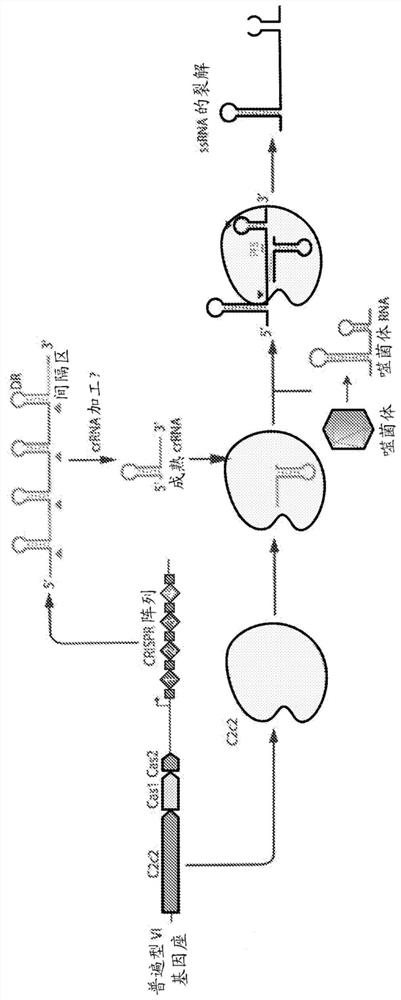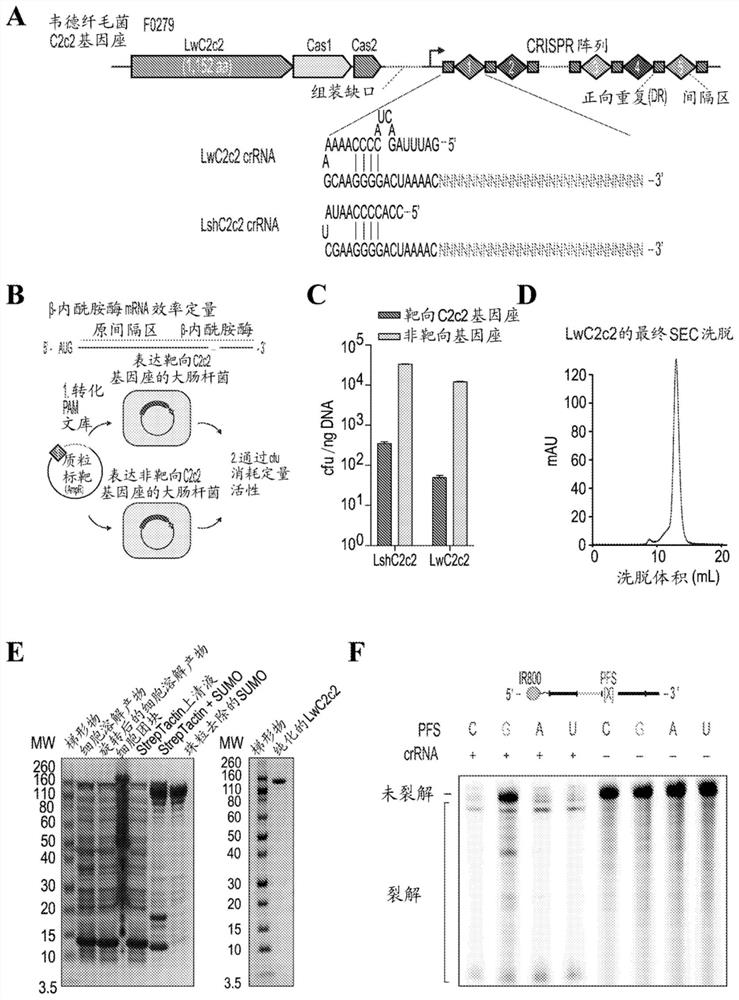Crispr effector system based diagnostics
A detection system, technology of effector proteins, applied in the direction of genetic engineering, microbial assay/inspection, DNA/RNA fragments, etc., can solve the problems of expensive, limited availability, low-sensitivity applications, etc.
- Summary
- Abstract
- Description
- Claims
- Application Information
AI Technical Summary
Problems solved by technology
Method used
Image
Examples
Embodiment 1- 1
[0635] Example 1 - General Scheme
[0636] Two ways are provided to perform the C2c2 diagnostic test for DNA and RNA. This approach can also be used with protein detection variants following delivery of detection aptamers. The first is a two-step reaction in which amplification and C2c2 detection are done independently. The second is where everything is combined in one reaction and this is called a two-step reaction. It is important to keep in mind that amplification may not be necessary for higher concentration samples, so it is good to have a separate C2c2 protocol that does not have amplification built in.
[0637] Table 10. CRISPR effectors only - no amplification:
[0638]
[0639]
[0640] The reaction buffer is: 40mM Tris-HCl, 60mM NaCl, pH 7.3
[0641] This reaction is carried out at 37°C for 20 minutes to 3 hours. Read at Excitation: 485nm / 20nm, Emission: 528nm / 20nm. Signals for single molecule sensitivity can be detected starting at 20 minutes, but signal...
Embodiment 2
[0654] Example 2 - Highly Sensitive and Specific Detection of C2C2-Mediated DNA and RNA from Ciliophora videides
[0655] Rapid, cheap, and sensitive nucleic acid tests can aid point-of-care pathogen detection, genotyping, and disease surveillance. The RNA-guided RNA-targeting CRISPR effector Cas13a (previously known as C2c2) exhibits "side effects" of promiscuous RNase activity following target recognition. Applicants combine the collateral effect of Cas13a with isothermal amplification to establish a CRISPR-based diagnostic (CRISPR-Dx), providing rapid DNA or RNA detection with attomolar sensitivity and specificity for single-base mismatches. The applicant used this Cas13a-based molecular detection platform, called SHERLOCK (Specific High Sensitivity Enzymatic Reporter Unlocking), to detect specific strains of Zika and Dengue viruses, and to distinguish pathogens bacteria, genotyping human DNA, and identifying mutations in cell-free tumor DNA. In addition, SHERLOCK reagent...
Embodiment 3
[0772] Example 3 - Characterization of Cas13b Orthologs with Orthogonal Base Preferences
[0773] Applicants biochemically characterized fourteen orthologs of the recently defined Type VI CRISPR-Cas13b family of RNA-guided RNA-targeting enzymes to find new candidates for improved SHERLOCK assay technology ( Figure 83 A and Figure 85 ). Applicants were able to heterologously express fourteen Cas13b orthologs in E. coli and purify the protein for in vitro RNase activity assays ( Figure 86 ). Because different Cas13 orthologs may have different base preferences for optimal cleavage activity, Applicants generated a fluorescent RNase homopolymer sensor consisting of 5 A, G, C, or U to estimate orthogonal cleavage preference. Applicants incubated each ortholog with its cognate crRNA targeting a synthetic 173nt ssRNA 1 and measured incidental cleavage activity using a homopolymer fluorescent sensor ( Figure 83 B and Figure 87 ).
PUM
 Login to View More
Login to View More Abstract
Description
Claims
Application Information
 Login to View More
Login to View More - Generate Ideas
- Intellectual Property
- Life Sciences
- Materials
- Tech Scout
- Unparalleled Data Quality
- Higher Quality Content
- 60% Fewer Hallucinations
Browse by: Latest US Patents, China's latest patents, Technical Efficacy Thesaurus, Application Domain, Technology Topic, Popular Technical Reports.
© 2025 PatSnap. All rights reserved.Legal|Privacy policy|Modern Slavery Act Transparency Statement|Sitemap|About US| Contact US: help@patsnap.com



